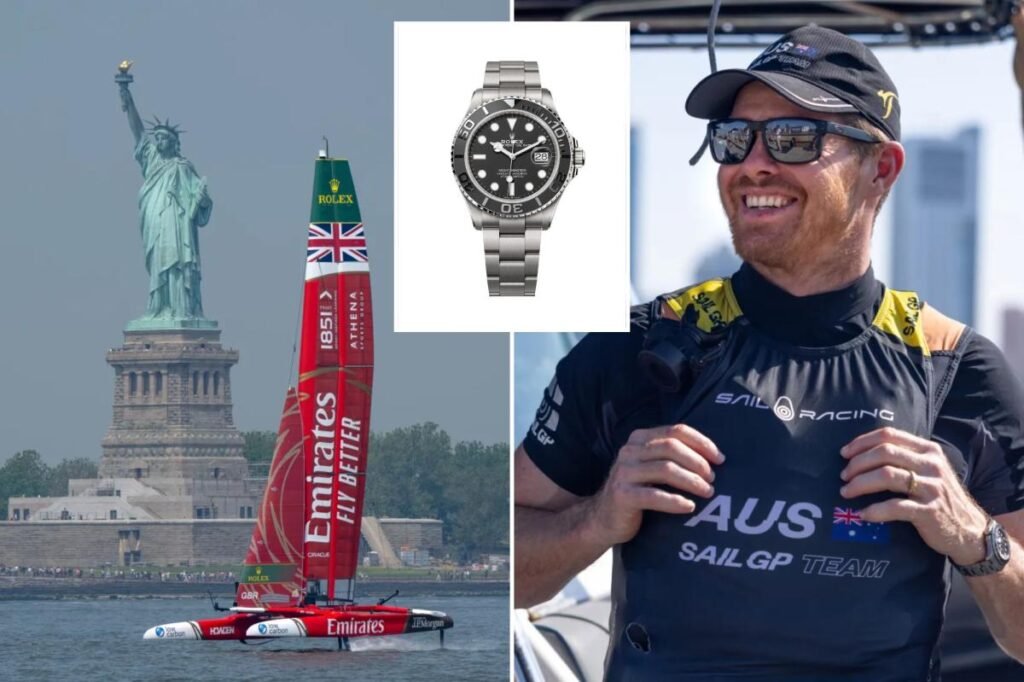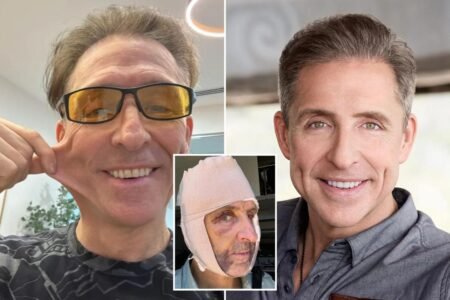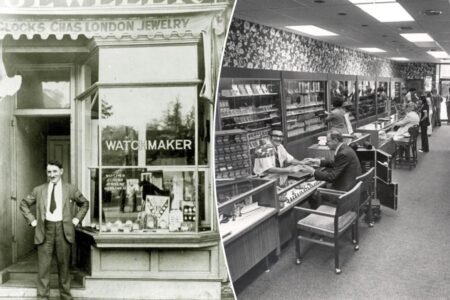These SailGP boats don’t just float, they fly.
The ultralight F50 catamarans are fitted with twin hydrofoils that lift the hulls more than a yard above the surface of the water, allowing the vessels to soar at an electrifying 60 mph.
That’s why the global sail racing league is compared to Formula One auto racing.
The new high-speed sports championship was created in 2018 by three-time America’s Cup winner Sir Russell Coutts and Oracle co-founder Larry Ellison, and continues to grow in size and importance.
Broadcast on CBS Sports, the races are thrillingly fast, dazzlingly high-tech and as elite as the numerous Olympic medalists and America’s Cup champions crewing the boats.
This season, a dozen national teams are competing in 12 celebrated bays and harbors around the world — from Auckland to Sydney to St-Tropez — for a total purse of $12.8 million. The Mubadala New York Sail Grand Prix (top and below), which took place on Governors Island in June, became the championship’s most attended US event to date.
The Manhattan race drew more than 10,000 ticketed spectators, including DJ Khaled, the new sport’s chief hype officer. The charismatic music mogul, who Instagrammed his appearance, pulled up to the grandstands in an F50. “We’re off to the races, let’s go!” he shrieked as the boat rose on its foils and zoomed by the Statue of Liberty. “Yo, we’re doing a wheelie!”
Here’s how the series works. The teams sail identical F50s, each worth an estimated $4 million and fitted with an array of sensors that capture millions of data points. Oracle Cloud Infrastructure delivers real-time race metrics to all teams, broadcast partners and fans worldwide, adding insight into performance. Each crew must always have at least one female athlete on board, whether she’s a driver, a strategist, a wing trimmer, a flight controller or a grinder.
“I wear it on the water, I wear it in the gym, I wear it out to dinner. Surely you’d think I’d scratch it up with all the sailing I do, but it just doesn’t seem to scratch.”
Tom Slingsby, CEO and driver of Australia’s Bonds Flying Roos
In every host city, there are six to seven close-to-shore fleet races over two days, followed by a final featuring the top three teams.
The Grand Final, at the end of the season, sees the top three teams overall compete for the Rolex SailGP Championship and a winner-takes-all $2 million prize. This season’s winner will be awarded next month in Abu Dhabi.
Rolex partnered with the series from its inception; last November, the luxury watchmaker announced it was becoming the first Title Partner, the highest level of sponsorship. “Rolex’s heritage of performance and precision perfectly complements SailGP’s mission to redefine the sport of sailing — an annual championship, providing thrilling racing in iconic global destinations,” said Coutts in a statement.
A number of Rolex testimonees compete in the league, including double Olympic sailing champ Martine Grael. She became the first female driver to win a fleet race when she led the Mubadala Brazil team to victory in New York.
Her journey is chronicled in an episode of “Racing on the Edge,” the docuseries available on SailGP’s YouTube channel.
As for Rolex testimonee Tom Slingsby, he’s the driver and CEO of Australia’s squad, which won titles in the 2019, 2021-22 and 2022-23 seasons.
The team recently announced Hugh Jackman and Ryan Reynolds as new co-owners, and rebranded as Bonds Flying Roos after its Title Partner, the Bonds underwear company.
Slingsby spoke to Alexa before the New York event. Despite the rainy forecast, the Olympic gold medalist and America’s Cup winner was looking forward to catching some wind.
“I’m happy as long as we’re foiling,” said the seafarer, who was wearing a Rolex Yacht-Master 42 watch in RLX titanium, which he said is by far his favorite watch. “If you’re foiling, then the racing’s fun and fast and exciting.
“New York is amazing,” he continued. “It’s a very tough racetrack, if I’m honest. The wind comes through all the skyscrapers and it gets really chopped up and tough to sail.
Then, there’s a lot of current on the Hudson, so you’ve got to know exactly where the channels of current are running. “But the amazing thing is that if we get a nice breeze racing in front of Manhattan and the Statue of Liberty, it really doesn’t get much better than that. It’s a bit of a pinch-yourself moment.”
Read the full article here












